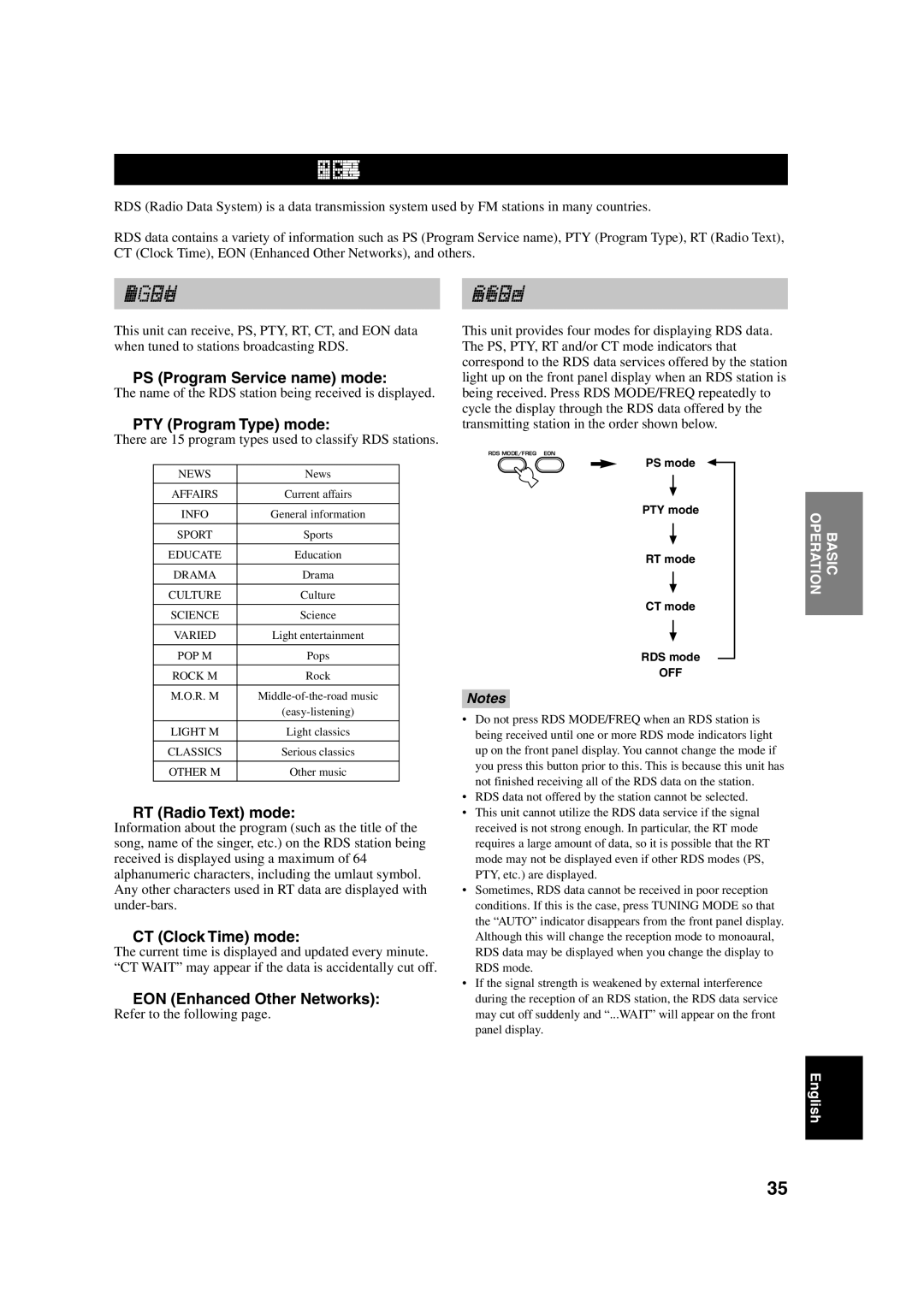RX-V340RDS specifications
The Yamaha RX-V340RDS is a well-regarded AV receiver that debuted in the early 2000s, making its mark in the home theater community for its impressive audio quality and versatile features. Designed to cater to audiophiles and casual listeners alike, the RX-V340RDS offers a blend of modern technology and user-friendly functionality, ensuring a satisfying home entertainment experience.One of the standout features of the RX-V340RDS is its powerful amplification system, which delivers 5.1 channels of rich, immersive sound. With a solid output of 100 watts per channel, the receiver ensures that every audio detail is reproduced with clarity and depth, making it suitable for everything from music playback to movie soundtracks. The inclusion of RDS (Radio Data System) technology enhances FM radio functionality, allowing listeners to access station information directly on the receiver's display.
The RX-V340RDS boasts a comprehensive range of audio processing options, including Dolby Pro Logic II, which expands stereo sources into full surround sound. This feature enhances the listening experience by creating a more realistic sound environment, ensuring that viewers can fully appreciate the nuances of dialogue and sound effects in films. Additionally, users can enjoy compatibility with various surround modes, providing flexibility in tailoring the audio output to suit personal preferences.
Connectivity options are robust, featuring several input and output options including multiple analog audio inputs, composite video inputs, and digital audio inputs for enhanced versatility. The receiver is equipped with an easy-to-navigate interface, facilitating seamless integration with a variety of source devices such as DVD players, gaming consoles, and more. The inclusion of a front-facing headphone jack adds convenience for private listening sessions without disturbing others.
Other notable characteristics include a comprehensive on-screen display that simplifies the setup process and allows users to easily manage settings. Yamaha's commitment to quality is evident in the RX-V340RDS's build, with high-quality components designed to minimize interference and deliver clear sound.
In summary, the Yamaha RX-V340RDS stands out for its solid performance, versatility, and ease of use. It is a perfect choice for those looking to elevate their home entertainment system while enjoying excellent sound quality and user-friendly features. Perfectly suited for both music lovers and movie enthusiasts, this receiver continues to be a popular choice in the world of home audio.

